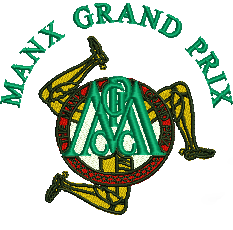






The MANX GRAND PRIX has a tradition going back more than ninety years...
It started life as a race for amateurs, one organised specifically to counteract the muscling out of many competitors by the professional teams, and professional riders, who were increasingly competing in the TT.
The MANX MOTOR CYCLE CLUB, in particular, was voicing worries as early as the start of the 1920s that amateur and private riders were being outgunned by the dominance of the bigger works teams.
The first event took place in 1923, further spurred on by fears, later proved to be inaccurate, that the TT races would be moving permanently to a European base.
Under the name of the Manx Amateur Motor Cycle Road Race Championships, the first field had a total of 31 starters, in two classes, with the winner posting an average speed of just over 50 miles per hour.
In 1926 the course distance was increased from five laps to six, and two years later came the introduction of the separate Junior race.
These races continued through until 1929 when, after protracted wrangling about the precise definition of ‘amateur’ and a number of high-profile disqualifications, the races were rebranded under the name we know today: the Manx Grand Prix.
The first MGP took place in 1930, this time with over 100 entries, with the winner posting a record fastest lap time of 71.13 miles per hour.
Things were speeding up, and the scale of the event was increasing too, with the introduction of the Lightweight class in 1934.
The Second World War brought an end to the MGP until racing on the Mountain Circuit began again in 1946.
From then the story of the Manx Grand Prix has been one of growth: in classes, speeds and entrants.
After a short-lived experiment in the last 1950s, newcomer races were reintroduced into the MGP calendar from 1978, this time as a permanent fixture. And in 1983 the three Classic classes made their first appearance at the MGP.
In 1988 the increase in classes and the popularity of the MGP overall, meant that the racing programme was expanded from to three days from the previous two-day format.
Other changes reflected the wider changes taking place in the world, with the first woman competitor taking part in 1989, with the first female winner taking chequered flag in 2009.
Perhaps the last significant change came about in 2013 when the Isle of Man Government took over the promotion of the MGP Classic races – now branded the Classic TT – with the Manx Motor Cycle Club retaining the title ownership and promotion of the Manx Grand Prix.
It’s been an exciting, ever-changing and dynamic history, and one that looks set to continue.
The Manx Grand Prix remains, for all its fans, whether racers, ex-racers, spectators or followers from home, a uniquely special motorsport event.
The Manx Grand Prix – get your heart racing.
MMCC MEMBERSHIP
Manx Motor Cycle Club Membership can be obtained by completing:
︎ MMCC MEMBERSHIP FORM ︎︎︎
It started life as a race for amateurs, one organised specifically to counteract the muscling out of many competitors by the professional teams, and professional riders, who were increasingly competing in the TT.
The MANX MOTOR CYCLE CLUB, in particular, was voicing worries as early as the start of the 1920s that amateur and private riders were being outgunned by the dominance of the bigger works teams.
The first event took place in 1923, further spurred on by fears, later proved to be inaccurate, that the TT races would be moving permanently to a European base.
Under the name of the Manx Amateur Motor Cycle Road Race Championships, the first field had a total of 31 starters, in two classes, with the winner posting an average speed of just over 50 miles per hour.
In 1926 the course distance was increased from five laps to six, and two years later came the introduction of the separate Junior race.
These races continued through until 1929 when, after protracted wrangling about the precise definition of ‘amateur’ and a number of high-profile disqualifications, the races were rebranded under the name we know today: the Manx Grand Prix.
The first MGP took place in 1930, this time with over 100 entries, with the winner posting a record fastest lap time of 71.13 miles per hour.
Things were speeding up, and the scale of the event was increasing too, with the introduction of the Lightweight class in 1934.
The Second World War brought an end to the MGP until racing on the Mountain Circuit began again in 1946.
From then the story of the Manx Grand Prix has been one of growth: in classes, speeds and entrants.
After a short-lived experiment in the last 1950s, newcomer races were reintroduced into the MGP calendar from 1978, this time as a permanent fixture. And in 1983 the three Classic classes made their first appearance at the MGP.
In 1988 the increase in classes and the popularity of the MGP overall, meant that the racing programme was expanded from to three days from the previous two-day format.
Other changes reflected the wider changes taking place in the world, with the first woman competitor taking part in 1989, with the first female winner taking chequered flag in 2009.
Perhaps the last significant change came about in 2013 when the Isle of Man Government took over the promotion of the MGP Classic races – now branded the Classic TT – with the Manx Motor Cycle Club retaining the title ownership and promotion of the Manx Grand Prix.
It’s been an exciting, ever-changing and dynamic history, and one that looks set to continue.
The Manx Grand Prix remains, for all its fans, whether racers, ex-racers, spectators or followers from home, a uniquely special motorsport event.
The Manx Grand Prix – get your heart racing.
MMCC MEMBERSHIP
Manx Motor Cycle Club Membership can be obtained by completing:
︎ MMCC MEMBERSHIP FORM ︎︎︎
